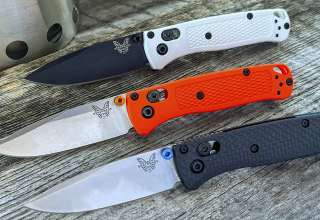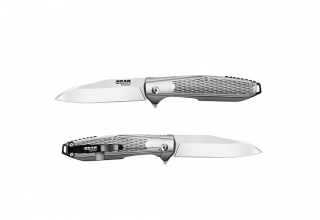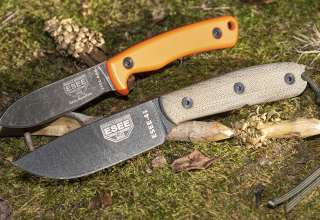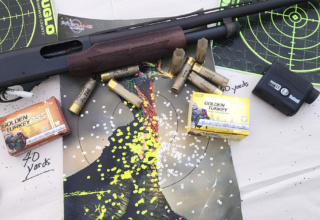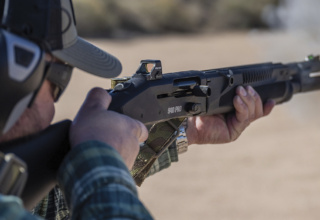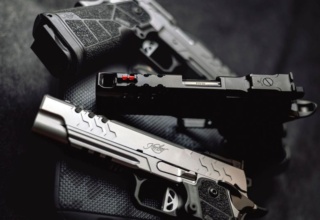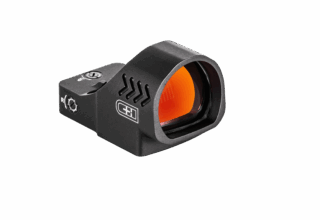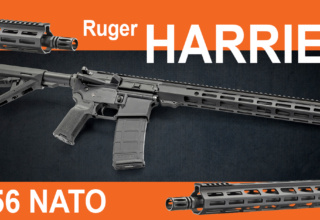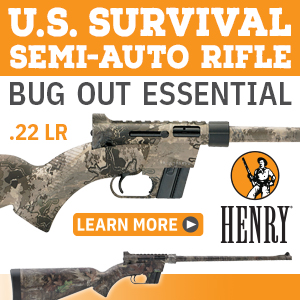Replaceable-blade knives are the answer for many outdoors enthusiasts who find themselves on the blade-sharpening struggle bus
by Larry Case
I consider myself a pretty fair outdoorsman. Usually, I shoot well enough to bring home some meat, and I can track most things above the size of a bobcat. If I get turned around in the big woods, I can find my way out in a day or two.
However, one significant area in which I have always fallen short, and I have nightmares of Davy Crockett and Russel Annabel standing over me and shaking their heads in disgust, is my knife sharpening skills.
I can’t sharpen a knife. Sure, if the blade is ultra-dull, I can get a slight edge on it, but I’m by no means a cutler. There are outdoors people we all know, the guys and gals who sharpen a knife to a fine razor edge and then gleefully pull up a sleeve and shave hair off their arm. Many of these blade crafters will then take a piece of paper and slice off thin strips to show how good they are. I can’t sharpen a knife like that, and many hunters and anglers find themselves in the same boat.
It’s not from lack of trying. I don’t have the chops. I went through a phase where I would call up known knife magicians and let them know I wanted lessons. Most of these lessons took place in a knife guru’s garage — me and a wet stone with some nasty-looking oil on it. Sometimes the instructions were vague, and other times, they were good. The art, though, never clicked with me.
Then, thank goodness, things changed. I started carrying an Outdoor Edge replaceable-blade knife, and no matter where I was or what I was doing, one thing was sure: I had a razor-sharp blade in my pocket.
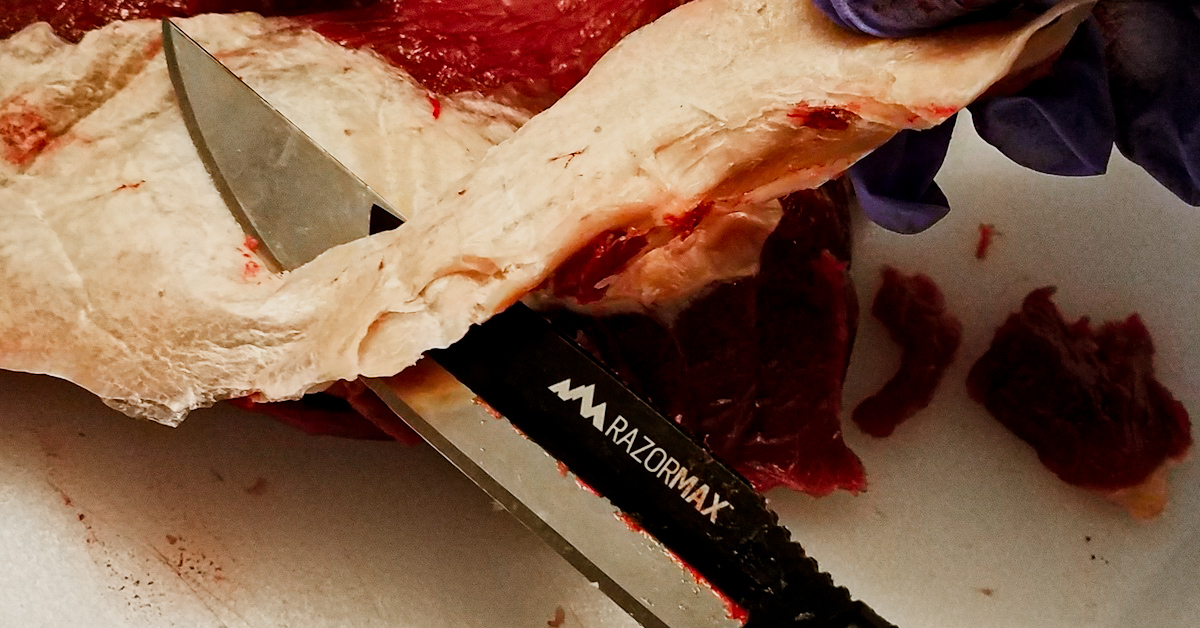
The basic premise of Outdoor Edge knives is the same as any replaceable blade knife. You start with an extremely sharp blade, and I mean surgical scalpel sharp. This is not the blade you show your buddy, and he takes the knife in hand to test the edge by touching it lightly with his thumb. I’m telling you right now; if you do that, you will be looking for the Band-Aids. Sometimes, I think I can look at these blades and cut myself.
When you start perusing the Outdoor Edge website, you may get lost in the number of knife choices available. I have carried the RazorLite model for years and graduated to the RazorMax when I wanted a slimmer, longer blade for boning work. After a deer processing session with a few buddies, my RazorMax knife disappeared by some strange occurrence. Weird! Now I have acquired the RazorBone model, which features three different blade selections. The RazorBone set includes a 3.5-inch drop-point blade, a 5-inch boning/fillet blade, and a new gutting blade. The new RazorBone offers an excellent solution to processing big and small game from start to finish, allowing you to field dress, skin, debone, and prepare cuts of meat with a single knife that never needs sharpening.
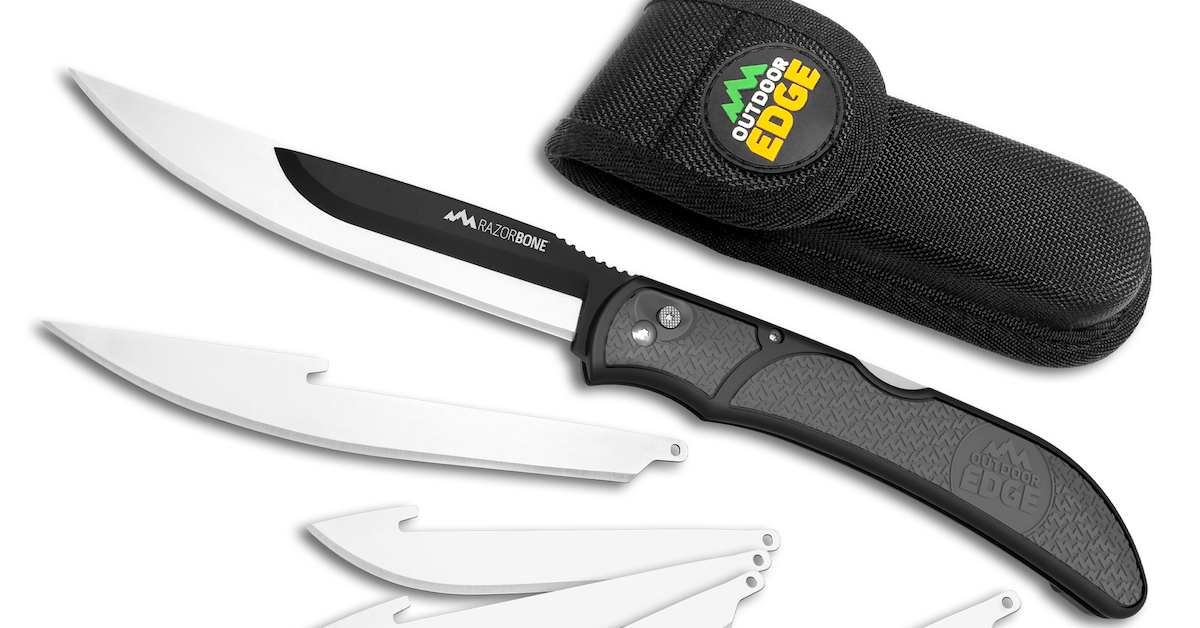
The 3.5-inch general-purpose drop-point blade is a workhorse for field-dressing and skinning. The new gutting blade will open the game like a zipper without piercing vital organs, and the reliable, surgically sharp, boning/fillet blade will process meat quickly and efficiently. Each of the three blades locks securely into the RazorBone’s black-oxide coated stainless-steel blade holder to provide the strength and rigidity of a traditional knife while allowing ample flexibility for the 5-inch boning/fillet blade. Each blade style closes individually into the handle for the convenience of a folder and versatility of a multi-blade knife. In addition, each Japanese 420J2 stainless steel blade is precisely heat-treated and hand-finished to shaving sharpness.
I have taken apart many deer with the Razor line of Outdoor Edge knives, and I probably wouldn’t attempt this chore now without them. I use them on small game as well, and I usually use the “cut the tail” method to skin squirrels. This involves starting at the base of the squirrel’s tail and severing the tail without cutting it free of the squirrel’s hide. Next, two minor cuts are made at an angle down the back, allowing something to grasp to pull the fur off the squirrel. When done correctly, this method will produce the cleanest squirrel in the least amount of time, but it requires a sharp knife, and the Outdoor Edge models fill the bill.
The Outdoor Edge RazorBone knife is a tough, dependable knife with a razor-sharp blade for processing game from start to finish.
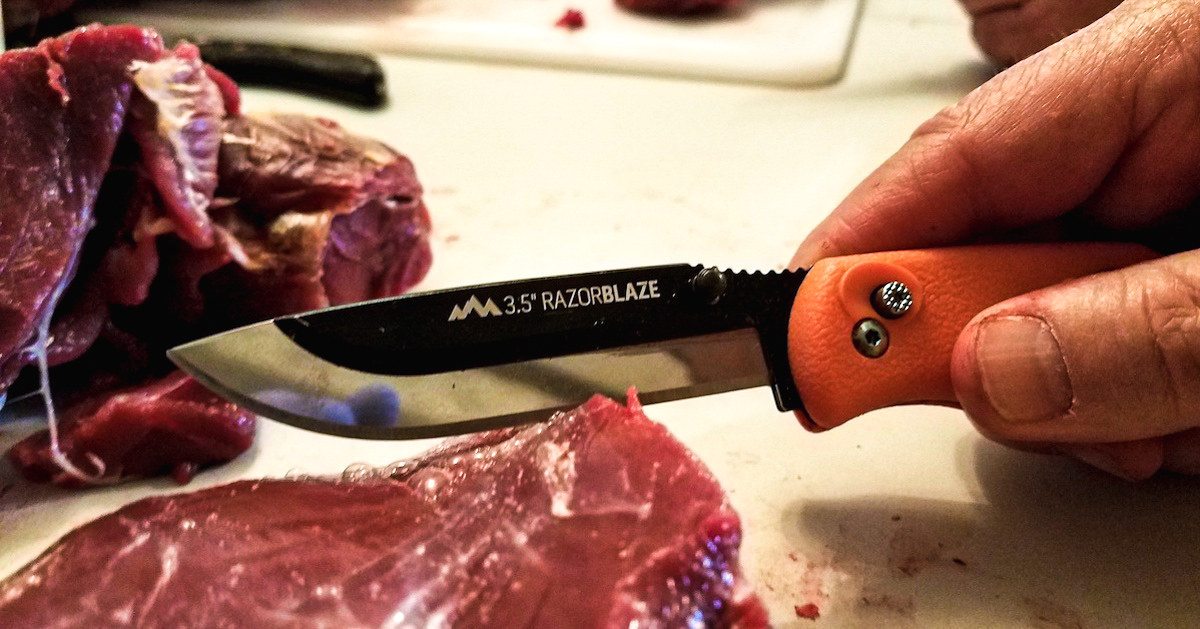
The 411
The RazorBone knife, as with all Outdoor Edge knives, serves as a super-sharp knife for all hunting-related jobs in the field. The replaceable blades allow for quick replacement with no time lost.
What We Like
- The replaceable blades are carried in the case, and the knife is super handy. A dulled blade can be replaced in a matter of seconds.
- The rubberized handle allows for a secure, non-slip grip.
- The knife includes a nylon sheath for added protection.
What We Would Change
- Some with larger hands may consider the grip a tad on the small side.
- The nock on most replaceable blade knives is blade thickness. A thicker blade would be nice, but once you figure out how much pressure is too much on the blade, you’ll be fine.
Compare To
- Havalon Talon Hunt
- Tyto 1.1 Replaceable Blade Knife
- Gerber Gear Vital Pocket Folding Hunting Knife
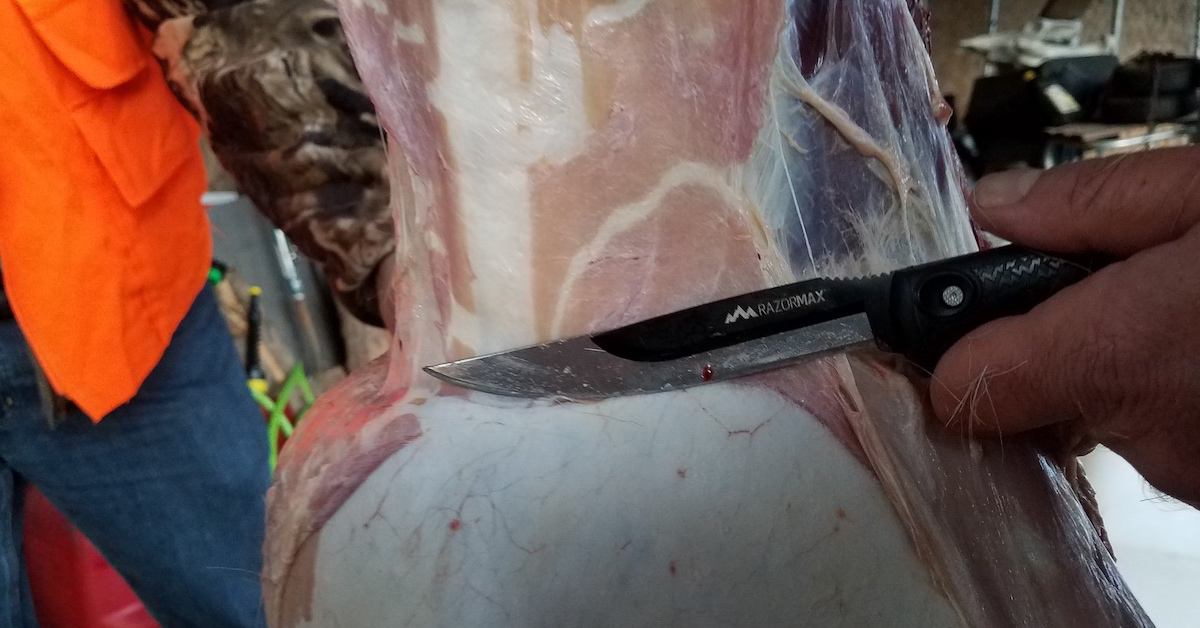
This article will not sit well with any of the knife sharpening gurus I know, but I do not believe any of them can sharpen a knife to match an Outdoor Edge. If you purchase one of these knives, you may as well buy two. Once your buddies try yours, it will probably come up missing.
Outdoor Edge RazorBone Specifications
- Drop-Point Blade: 3.5 in.
- Boning/Fillet Blade: 5.0 in.
- Gutting Blade: 3.4 in.
- Overall Drop-Point Blade: 9.4 in.
- Overall Boning/Fillet Blade: 10.8 in.
- Overall Gutting Blade: 9.25 in.
- Weight: 3.1 oz.
- Blade Steel: Japanese 420J2
- Knife Handle: Grivory with TRP inserts and stainless-steel pocket clip


